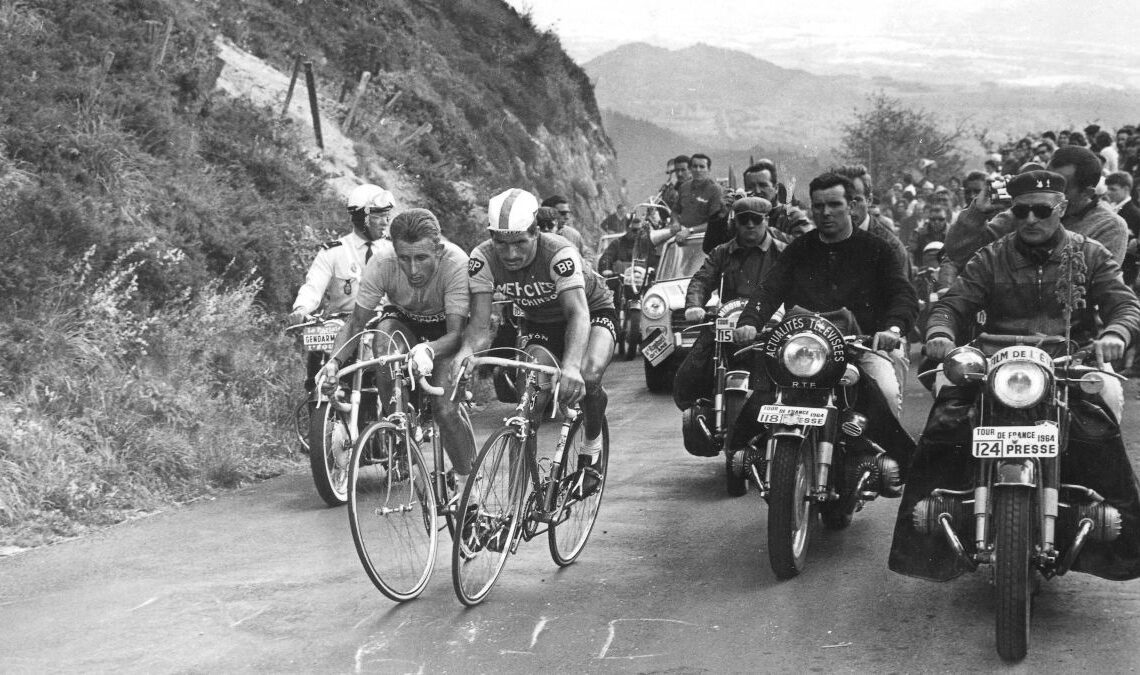In Paris in the summer of 2001, the Luxembourg Gardens served as the site of an exhibition showcasing the greatest sports photographs of the 20th century. 100 images were displayed along its green railings, from fencing to football, from Alain Prost to Zinedine Zidane, but one picture drew more footfall than any other: Jacques Anquetil and Raymond Poulidor, elbow to elbow on the Puy de Dôme, locked in combat for the 1964 Tour de France.
Each evening, the pavement around the perimeter of the gardens was blocked by the masses who found themselves inexorably drawn to the image, pausing to gaze at the two figures in hushed silence as though contemplating a religious icon. In some ways, perhaps they were.
The photograph has a prose counterpart in the oft-cited words of race director Jacques Goddet after he had observed the contest at close quarters: “Their breath, their sweat, and the wool of their jerseys mixed.”
Much in like epic poetry, hand-to-hand combat has provided much of the most enduring passages from Tour history, and Anquetil and Poulidor’s contest outshone all others, reaching its apotheosis in the most striking way imaginable, on the extinct volcano of the Puy de Dôme just two days from Paris.
Over the years, it became an article of faith that Anquetil versus Poulidor was the Tour’s perfect duel and 1964 the race’s greatest edition. In 2004, a panel led by former Tour director Xavier Louy deemed it to be just that, and no other edition of the race has inspired quite the same mountain of prose as Anquetil’s fifth overall victory (or, depending on your point of view, as Poulidor’s most famous defeat). Barely a summer goes by without a new addition to an already extensive library. For so many French authors, writing of Anquetil and Poulidor mirrors how their counterparts across the Atlantic tackle Ali or DiMaggio. They are rarely writing about sportsmen so much as about a country and a place in time.
In 1964, France was a whole divided in two parts, one of which was occupied by anquetilistes and the other by poulidoristes. Their divergence in style and reputation of their two idols was mirrored in the clash between their nicknames. In one corner, the hauteur of ‘Maître Jacques.’ In the other, the more everyman charms of ‘Poupou.’
Both were of farming stock, but it was the differences between them that always stood out: Anquetil was slender, blonde and reserved, Poulidor robust, dark-haired and…
Click Here to Read the Full Original Article at CyclingNews RSS Feed…

